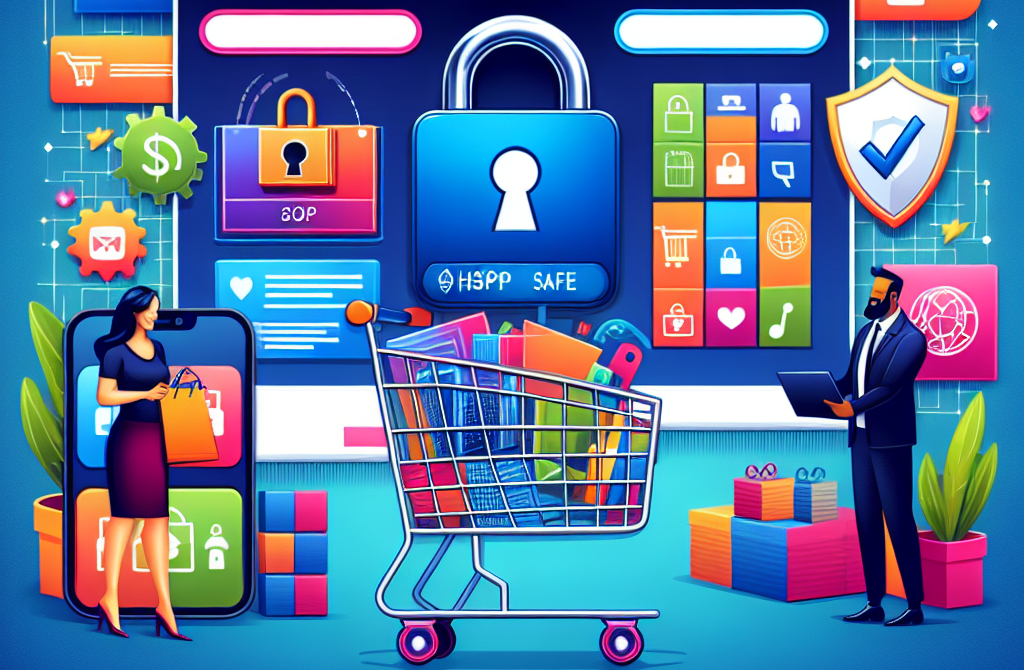Shop Smart, Stay Safe: Your Guide to Secure Online Shopping

The convenience of online shopping is undeniable. With a few clicks, you can have almost anything delivered right to your doorstep. However, this ease also comes with potential risks. Protecting your personal and financial information is paramount in the digital marketplace. By adopting a few smart habits, you can significantly enhance your online shopping safety and enjoy the benefits without the worry. Here's your guide to navigating the virtual aisles securely:
1. Choose Reputable Retailers:
- Stick to Familiar Names: Opt for well-known and established online stores with a proven track record. These retailers often have robust security measures in place.
- Research Lesser-Known Sites: If you're venturing onto a new or less familiar website, take a moment to do your homework. Look for customer reviews (on independent sites, not just the retailer's own), check their "About Us" page for transparency, and see if they have a physical address and contact information.
- Beware of Deals That Seem Too Good to Be True: Scammers often lure victims with unbelievably low prices. If a deal appears significantly cheaper than anywhere else, it's a major red flag.
2. Scrutinize Website Security:
- Look for "HTTPS": Before entering any personal or payment information, ensure the website address in your browser's address bar starts with "https://" and has a padlock icon. The "s" indicates a secure connection that encrypts your data.
- Check the Security Certificate: You can usually click on the padlock icon to view the website's security certificate. While this doesn't guarantee legitimacy, it confirms the website has taken steps to secure your connection.
- Be Wary of Generic or Poorly Designed Sites: Legitimate businesses invest in professional website design. Poor grammar, broken links, and a generally unprofessional appearance can be warning signs.
3. Practice Strong Password Hygiene:
- Use Strong, Unique Passwords: Create complex passwords that combine uppercase and lowercase letters, numbers, and symbols. Avoid using easily guessable information like your name, birthday, or common words.
- Don't Reuse Passwords: Using the same password across multiple accounts means that if one account is compromised, all your accounts are at risk.
- Consider a Password Manager: These tools securely store your passwords and can generate strong, unique ones for each website, making it easier to manage your online security.
- Enable Two-Factor Authentication (2FA): Whenever offered, activate 2FA. This adds an extra layer of security by requiring a second verification step (usually a code sent to your phone) in addition to your password.
4. Be Smart About Payment Methods:
- Consider Credit Cards: Credit cards often offer better fraud protection than debit cards. If your card information is stolen, you may have limited liability for unauthorized charges.
- Explore Secure Payment Services: Services like PayPal, Apple Pay, and Google Pay can add a layer of security by acting as an intermediary between you and the retailer, so you don't have to directly share your credit card details with every website.
- Avoid Direct Bank Transfers or Unsecured Payment Methods: Be cautious of requests for direct bank transfers or payments through less reputable or unfamiliar services, especially for online purchases from unknown sellers.
- Monitor Your Bank and Credit Card Statements Regularly: Check your statements frequently for any unauthorized transactions and report them immediately to your financial institution.
5. Protect Your Personal Information:
- Only Provide Necessary Information: Be wary of websites that ask for excessive personal details that aren't directly related to your purchase.
- Be Cautious of Public Wi-Fi: Avoid making online purchases or entering sensitive information when connected to public Wi-Fi networks, as these are often less secure. Consider using a Virtual Private Network (VPN) for added security on public networks.
- Be Aware of Phishing Scams: Be suspicious of unsolicited emails, messages, or calls asking for your personal or financial information. Legitimate businesses will not typically request this information via these channels. Never click on suspicious links or provide sensitive data in response to such requests.
- Keep Your Software Updated: Ensure your operating system, browser, and antivirus software are up to date. These updates often include security patches that protect you from known vulnerabilities.
6. Review and Save Your Order Information:
- Read the Fine Print: Before completing your purchase, carefully review the product description, price, shipping costs, return policy, and privacy policy.
- Save Confirmation Emails and Order Details: Keep records of your purchases, including confirmation emails and order numbers. This information can be crucial if you need to track your order, make a return, or dispute a charge.
By implementing these safety measures, you can significantly reduce the risks associated with online shopping and enjoy the convenience and vast selection it offers with greater peace of mind. Shop smart, stay vigilant, and protect your digital well-being.





